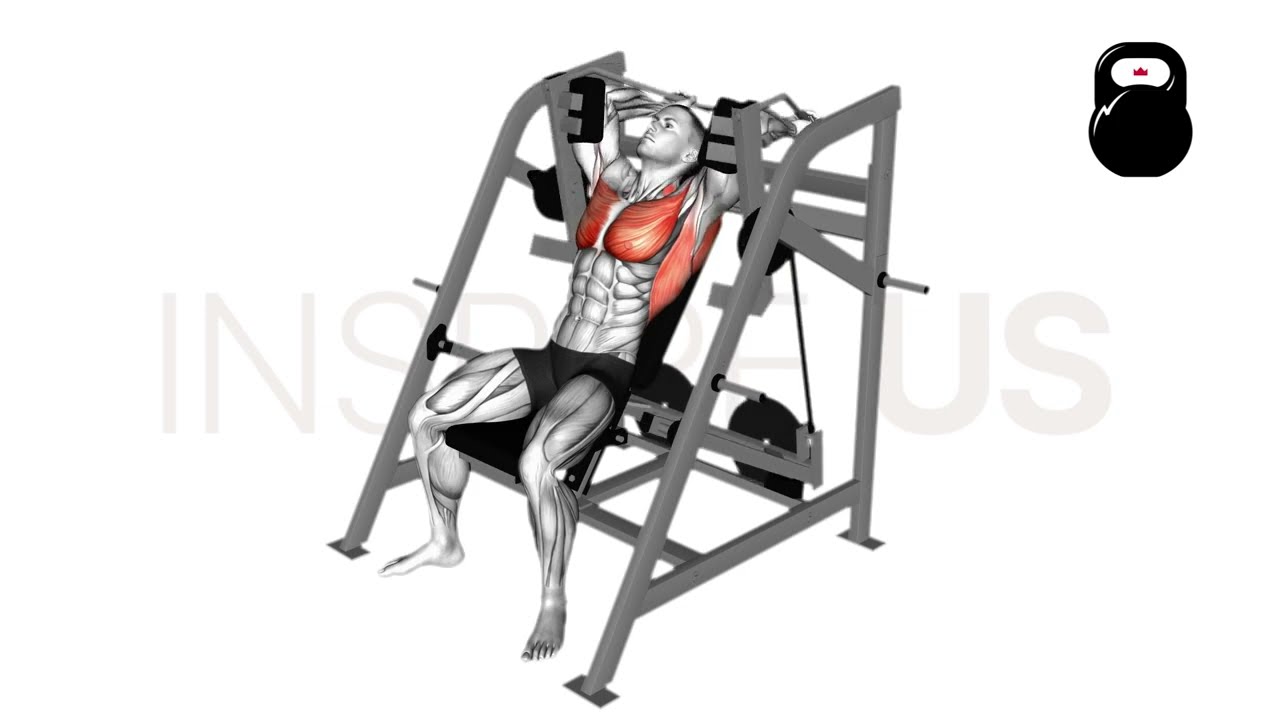Pullover Machine: Benefits, Muscles Worked, and More
The machine pullover is a variation of lat/chest pullover performed so as to target the major muscle groups on both sides of the mid-trunk. In comparison to other variations of pullover, the machine variant is significantly safer, more novice-friendly and far easier to maximize intensity on.
What are Machine Pullovers?
Machine pullovers are a compound machine-based resistance exercise meant to target the shoulders, chest, lats and other mid-back musculature to a moderately intense extent.
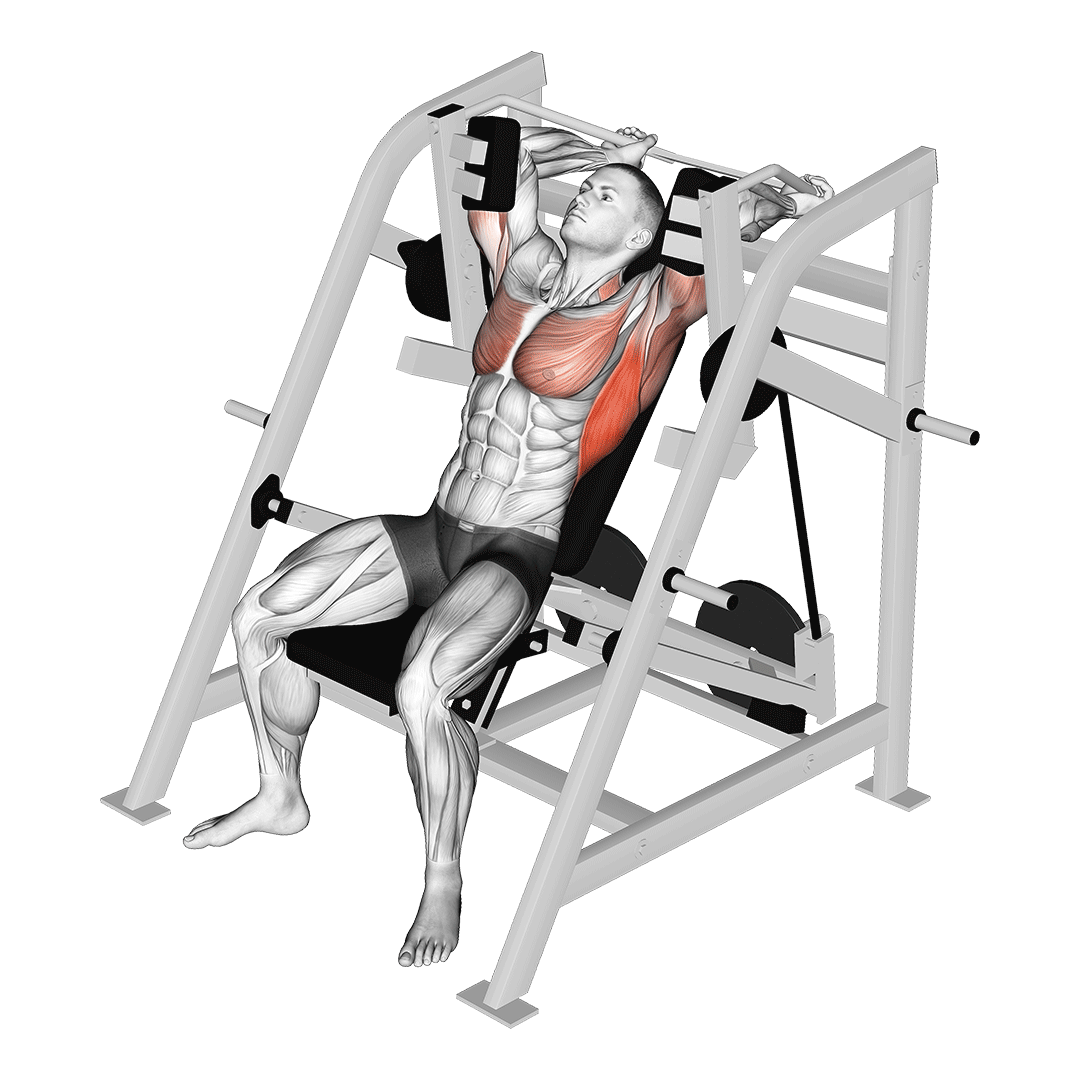
Although traditional pullovers call for a barbell or dumbbell, the machine pullover is of note for featuring a significantly lower risk of injury, a more fixed “bar path” and an overall greater level of comfort.
In actual programming, the machine pullover is often used as a secondary compound movement in strength or athletic training programs, or occasionally as a primary compound movement for bodybuilders and those with special training considerations.
Are Machine Pullovers the Right Exercise for You?
Machine pullovers are relatively simplistic and safe to perform. Even complete novices to weightlifting can perform them without much worry.
However, those with a history of shoulder or elbow injuries may wish to avoid the exercise without first speaking to a medical professional.
How to Use a Pullover Machine
To perform a pullover with the use of a pullover machine, the lifter will first seat themselves against the machine’s pads, arms raised over their head as they grip the handles in both hands, elbows pressed against the elbow pads.
The upper back should be flush against the backrest and the feet either pressed into the floor or wedged beneath the footrests, if available. This will help prevent turning the movement into a crunch.
Now positioned correctly, the lifter then squeezes their lats and chest, pulling the bar up and in front of their head without detaching their back from the seat.
They continue this radial movement until the handles are nearly parallel with the center of the torso, back muscles still firmly engaged.
Now having completed the midpoint of the repetition, the lifter allows the resistance of the machine to slowly pull their arms back above and behind their head, controlling the movement as they do so.
Once the handles are back in the starting position, the repetition is considered to be complete.
Sets and Reps Recommendation:
The machine pullover is considerably low impact, yet easy to reach maximal exertion with.
For novices or those seeking a less intense exercise, 2-3 sets of 8-12 repetitions at a light load is ideal.
For those seeking a more intense workout, 3-4 sets of 10-15 at a moderate load may be more effective.
What Muscles are Worked by the Pullover Machine?
Pullovers are the very definition of a compound movement, as they train more than a single muscle group throughout their movement pattern.
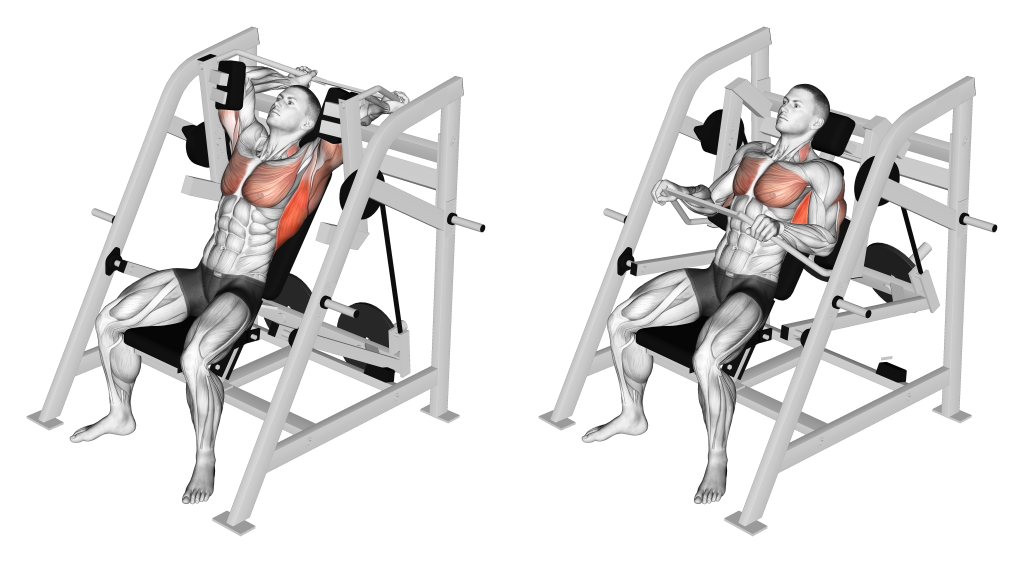
These worked muscles are divided according to the specific manner in which they contract, with dynamic contraction designating a “mover” or “mobilizer” muscle, and isometric contraction a “stabilizer” muscle.
Primary and Secondary Mover Muscles
First and foremost, pullovers will train the latissimus dorsi through a significant range of motion. This is further supported by mid-back muscles like the lower trapezius and teres major.
Apart from the muscles of the back, the pectoralis muscle group and the serratus anterior around the sides of the torso are also used in a secondary capacity to these mid-back muscles.
Unlike the stabilizer muscles, these primary and secondary movers are contracted dynamically - meaning they exert greater force and subsequently are fatigued to a greater extent, but will also reap the most benefits as well.
Stabilizer Muscles
In addition to the mover muscles, the machine pullover will also target muscles like the upper abdominals, the teres minor, the posterior deltoids and the triceps brachii.
Although quite a number of stabilizer muscles are activated during a machine pullover, they are not necessarily worked to any significant level of intensity - a benefit of the exercise’s machine based nature and overall positioning.
Rather than lengthening and shortening to exert force through the body, the stabilizer contract in place so as to aid the mover muscles and help keep the joints in position as the lifter moves through the repetition.
What are the Benefits of Doing Pullovers With a Machine?
Apart from sharing quite a few benefits with its free weight cousins, the machine pullover also offers a few benefits unique to itself alone.
Excellent for Building Mass in the Back and Chest
With a large range of motion, constant time under tension and high capacity for both resistance and volume, the machine pullover is excellent for building mass on both sides of the trunk.
The main benefactor of this particular advantage are the lats, as they are the principle mobilizer muscle of the movement and thereby work the hardest as well.
To get the most muscular hypertrophy out of machine pullovers, aim to keep intensity as high as possible while still maintaining proper form. Once other muscles or body parts like the legs or arms become involved, the lift becomes ineffective.
Excellent Range of Motion, Fixed Movement Pattern
When speaking purely beneath the wing of weightlifting, the term “range of motion” simply refers to the relative distance with which a specific movement is meant to be performed in.
Exercises like rack pulls or box squats tend to involve significantly shorter ranges of movement than other exercises as they involve the lifter’s body traveling a shorter distance throughout each rep.
In comparison, the pullover machine features a truly large range of motion - something that is highly conducive of muscular hypertrophy as it allows for a longer time under tension and aids in lengthening muscle fibers during eccentric contraction.
This benefit is further built upon by the fixed movement pattern enforced by the machine.
With less opportunity to destabilize or otherwise perform the movement incorrectly, lifters will be able to divert more energy and focus towards dynamic contraction of the mover muscles and further reduce their risk of injury.
Consistent Level of Tension
During dumbbell or barbell pullovers, tension throughout the muscles tends to decrease near the top of each repetition as the lifter raises the weight over their chest, essentially shifting pressure and resistance into the arms.
This loss of tension can result in poorer muscular development, hence the fact that many lifters will seek to keep their muscles contracted and tense as much as possible.
Because of the positioning and inherent design of most pullover machines, there is no loss of tension at any point in the range of movement. Throughout each repetition, the muscles remain consistently contracted against an even level of resistance - ensuring better muscular development and repetitions of better quality.
One can even go so far as to maintain a constant level of muscular tension throughout the entire set.
To do so, simply prevent the handles or pads from resting atop the stops, instead transitioning between each repetition by taking the movement as close to the end point as possible without actually resetting the machine.
Perfect for Full Body Workouts
As a benefit unique to pullovers and the few exercises like it, the machine pullover fits perfectly into full body workouts due to its intense recruitment of major muscle groups on both sides of the trunk.
Both the latissimus dorsi and pectoral muscle group encompass a significant portion of the upper body, and are among the strongest and largest therein.
These muscles are trained quite effectively with the use of the pullover machine, meaning that lifters will not need as much time and energy exercising both sides of the torso individually.
Of course, current best programming practices dictate that a solid full body training program will nonetheless still include dedicated push and pull movements, preferably of the free weight variety. Pair the machine pullover with exercises like rows and presses for better overall development.
Common Machine Pullover Mistakes to Avoid
Although using the pullover machine is relatively straightforward, avoid the following common mistakes to get the most out of your training.
Incomplete Range of Motion
Because the machine pullover involves such a sweeping range of motion, failing to fully complete this range directly affects how effective the exercise is as a whole.
Each repetition should start and end with the handle above and behind the head, with the arms approximately parallel to the ears.
The highest point of the repetition should involve the handle being pulled down to an area around the abdomen, this time with the arms parallel to the sides of the torso if possible.
Failing to complete a full range of motion will not only lead to poorer muscular development, but also sticking points, instability in certain ranges and even to injuries in more severe cases.
Using Excessive Momentum or Jerking the Machine
As is the case with many other exercises, jerking the handle around or otherwise deriving momentum in any manner other than contracting the right muscles is considered poor technique.
Performing the exercise in this manner can easily lead to acute injuries like sprains, tears and dislocations - especially if combined with poor form, an excessive amount of weight or a history of similar injuries.
Aim to keep a slow and consistent level of force output throughout each repetition, being mindful of feeling the “burn” in the correct muscle groups - those, of course, being the lats, mid-back and chest.
Utilizing the Arms
It is important to keep in mind that machine pullovers are a back and chest exercise, rather than an arm exercise.
Overutilizing the triceps, forearms or biceps will shift emphasis away from these areas and potentially lead to injuries of the elbows and shoulders.
To avoid making this sort of mistake, initiate the pull by flaring the lats and squeezing the chest, using the elbows solely for stability by pressing them against the pads.
Detaching the Back From the Seat
Detaching the back from the seat can turn the movement into a sort of abdominal crunch, potentially risking injury to the lower back and reducing contraction of the back muscles.
In most cases, lifters who pull their torso forwards alongside the handle are likely attempting to lift more weight than they are able, causing them to break away from proper form.
Aim for only a moderate amount of resistance, one that allows you to keep your back against the seat while still challenging the back and chest muscles.
Flaring the Elbows
Lifters with particularly large frames may find that the pads of the machine are too narrow for their arms, causing their elbows to rest at an angle that points them out to the sides, rather than parallel to the pad.
Depending on shoulder mobility and hand placement along the bar, this can lead to increased torsion and strain within the shoulder joint, leading to irritation and overuse injuries over time.
If the machine can’t quite be adjusted to meet your individual proportions, try experimenting with different grip styles or sitting lower along the seat to better angle the elbows.
Variants and Alternatives to the Pullover Machine
If your gym doesn’t have a pullover machine - or if you want something more functional and intense - try the following alternatives and pullover variations out.
Free Weight Pullovers
The first and most obvious alternative to machine pullovers is simply the free weight variation of the same exercise.
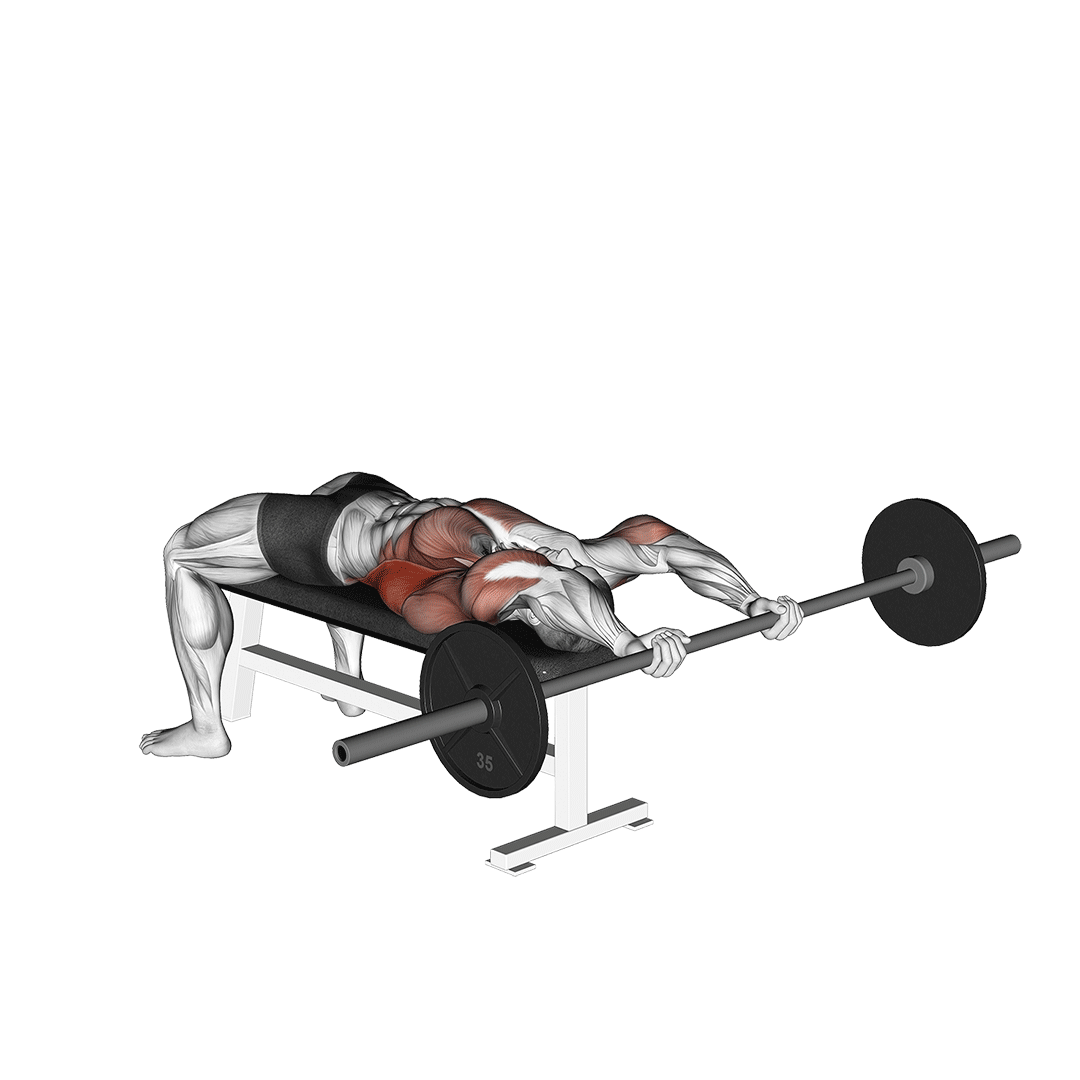
Rather than being performed in a reclined seated position, dumbbell or barbell pullovers involve the lifter lying flat on their back as they lower a weight behind and beneath their head, replicating the same movement pattern.
Unlike the machine variant, free weight pullovers feature significantly greater isometric contraction of the stabilizer muscles, but somewhat less focus on mid-back muscles other than the latissimus dorsi.
Lying Cable Pullovers
For a similar machine-based exercise with less shoulder and rotator cuff strain, the lying cable pullover is an excellent substitute.
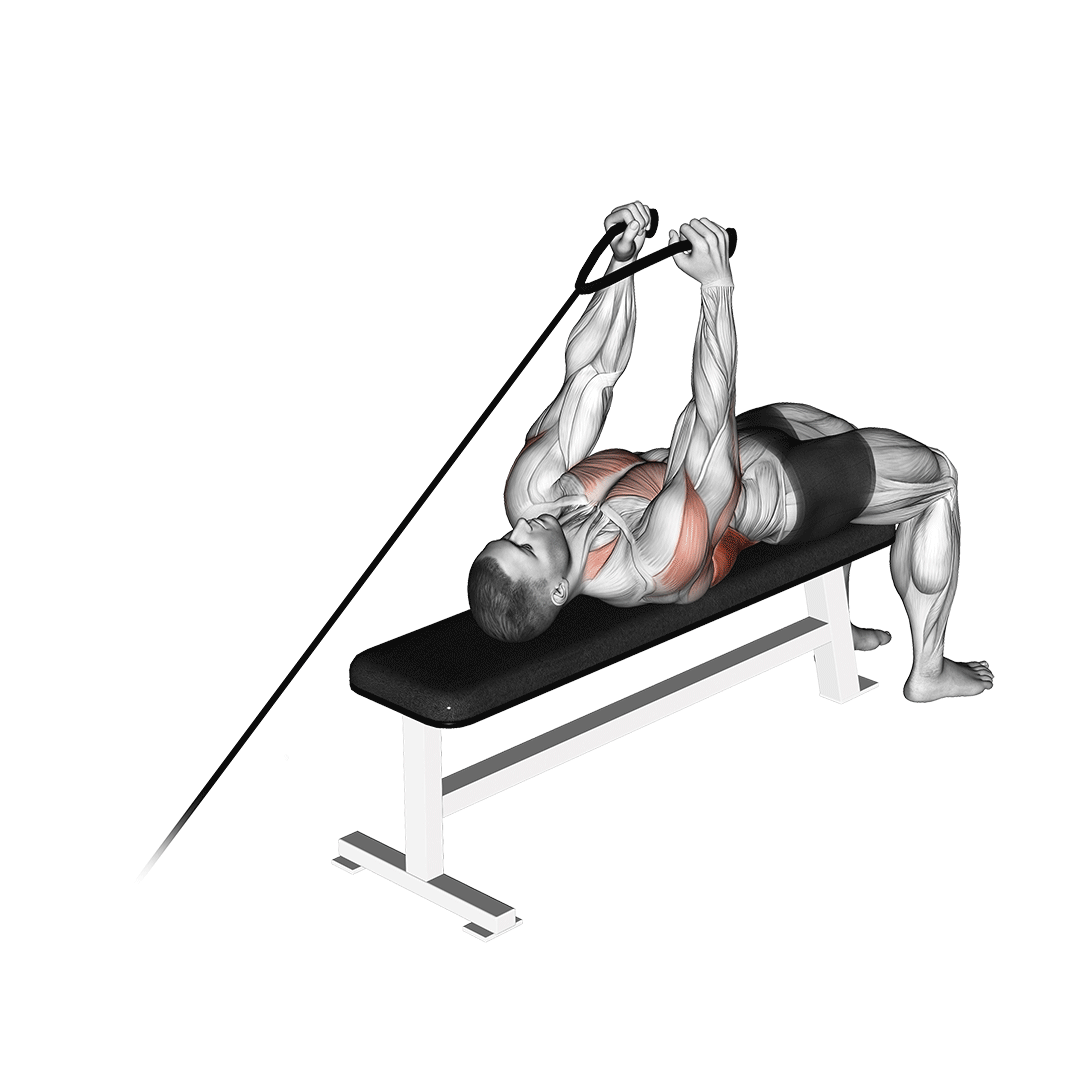
Lying cable pullovers involve the lifter lying atop a bench and rotating their arms from a point parallel to their head to just above their chest, meaning no behind the head movement is needed.
Although featuring a shorter range of motion, lying cable pullovers allow for greater tension in the chest, triceps and shoulders while also benefiting from the adjustability inherent to cable machines as a whole.
Front Lever Pull-Ups
Front lever pull-ups are a highly advanced calisthenics exercise targeting a similar set of muscles to the machine pullover, only with significantly greater stability and control required.
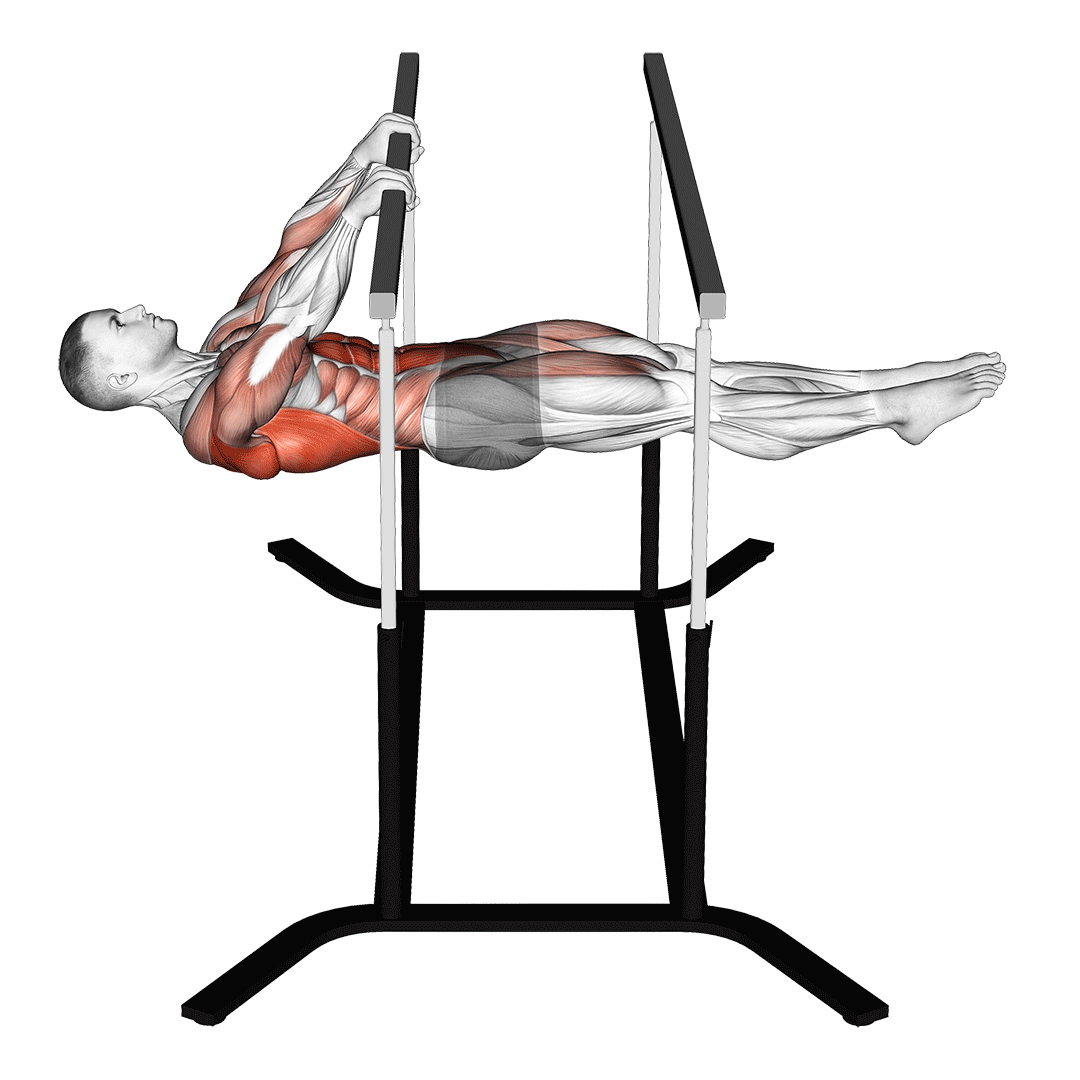
The front lever pull-up targets muscles on both sides of the trunk, sharing the same emphasis on the serratus, core, latissimus dorsi and pectoral muscles as is seen with the machine pullover.
If you are an advanced lifter without access to gym equipment, front lever pull-ups may be a viable alternative.
Frequently Asked Questions (FAQ)
Are Pullovers Good for Abs?
Only partially. Conventional machine pullovers primarily recruit the upper section of the abdominal muscles near the apex of their movement pattern, meaning that a large number of core muscles remain relatively untouched in comparison.
Are Pullovers for the Chest or Back?
Both. Pullovers target both the pectoral and latissimus dorsi muscles, regardless of variation.
This two-sided contraction pattern is a result of the movement of the arms, where the arms being raised over and in front of the chest leads to contraction of the pectoral muscles.
Are Cable or Machine Pullovers Better?
Both cable and machine pullovers target similar muscle groups, but the dedicated pullover machine is incrementally better purely due to its range of motion and safety mechanisms. They may be used interchangeably - but if you have to pick one, pick the pullover machine itself.
References
1. Marchetti, Paulo & Uchida, Marco C.. (2011). Effects of the Pullover Exercise on the Pectoralis Major and Latissimus Dorsi Muscles as Evaluated by EMG. Journal of applied biomechanics. 27. 380-4. 10.1123/jab.27.4.380.
2. Pezarat-Correia, Pedro & Medeiros, Pedro & Fernandes, Orlando & Vaz, João & Silva, Luís & Moraes, Antonio. (2020). Comparison of shoulder and trunk muscle activation between different pullover exercises. Revista Andaluza de Medicina del Deporte. 13. 127-133. 10.33155/j.ramd.2020.03.004.

